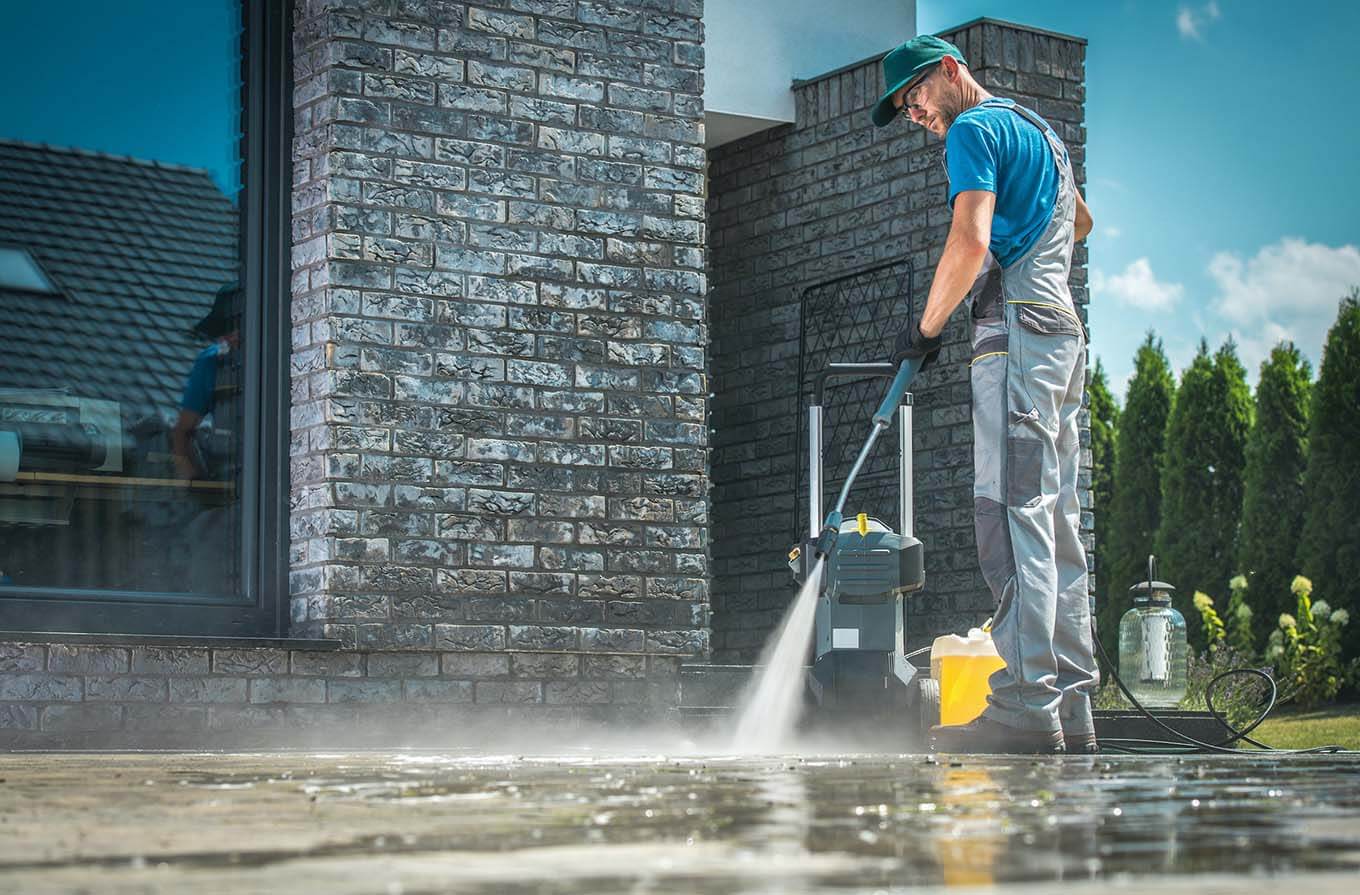If you have the heart of an entrepreneur and the work ethic of a champion, starting a pressure washing business is a great way to make money quickly. It’s a relatively low-cost business to start up, and with some clever marketing, you can easily bring in $500 or more in just a few days.
In this complete guide, we’ll walk you through every step of how to start a pressure washing business from scratch. We’ll cover everything from how to choose the right equipment and cleaning solutions, to how to find customers and market your business.
Whether you’re just looking for a weekend side hustle or you’re ready to commit to becoming a pressure washing business owner, our 8-step process will take you from zero to profit in no time.
How Does a Pressure Washing Business Work?
Pressure washing businesses operate through a very straightforward business model.
Clients hire a pressure washing company to clean their decks, homes, driveways, cars, or walkways with a pressure washing machine. Small business owners can charge an hourly rate, a flat rate per job, or based on square footage.
Most pressure washing customers are residential or commercial property owners. Residential customers typically need pressure washing services for their decks, siding, or porches. Commercial customers need help cleaning walkways, parking lots, and the exterior of buildings.
In both cases, the pressure washing job is intended to beautify the property and remove contaminants like dirt, algae, and moss.
What Do People Pay For Pressure Cleaning
Starting a pressure washing business is one of the best ways for college students to make money on the side because it’s a high-paying job if you can land gigs.
According to Home Advisor, homeowners spend anywhere from $150 to $750 to have one-story homes pressure washed. This comes out to about $0.10 to $0.50 per square foot.
Commercial properties, on the other hand, may pay as much as $1.00 per square foot of exterior surface area. And if the building has multiple stories or other hard-to-reach spaces, this rate could even increase.
A power washing business may charge $100 to $500 to clean a driveway, $250 to $400 to clean a patio, and $50 to $100 to cover the sidewalks. Most jobs combine a number of these services, but the ranges above can help you estimate the size of the opportunity in the pressure washing industry.
Even if you don’t know how to start a pressure washing business, it’s not hard to see that the potential revenue from just a few customers can add up quickly.
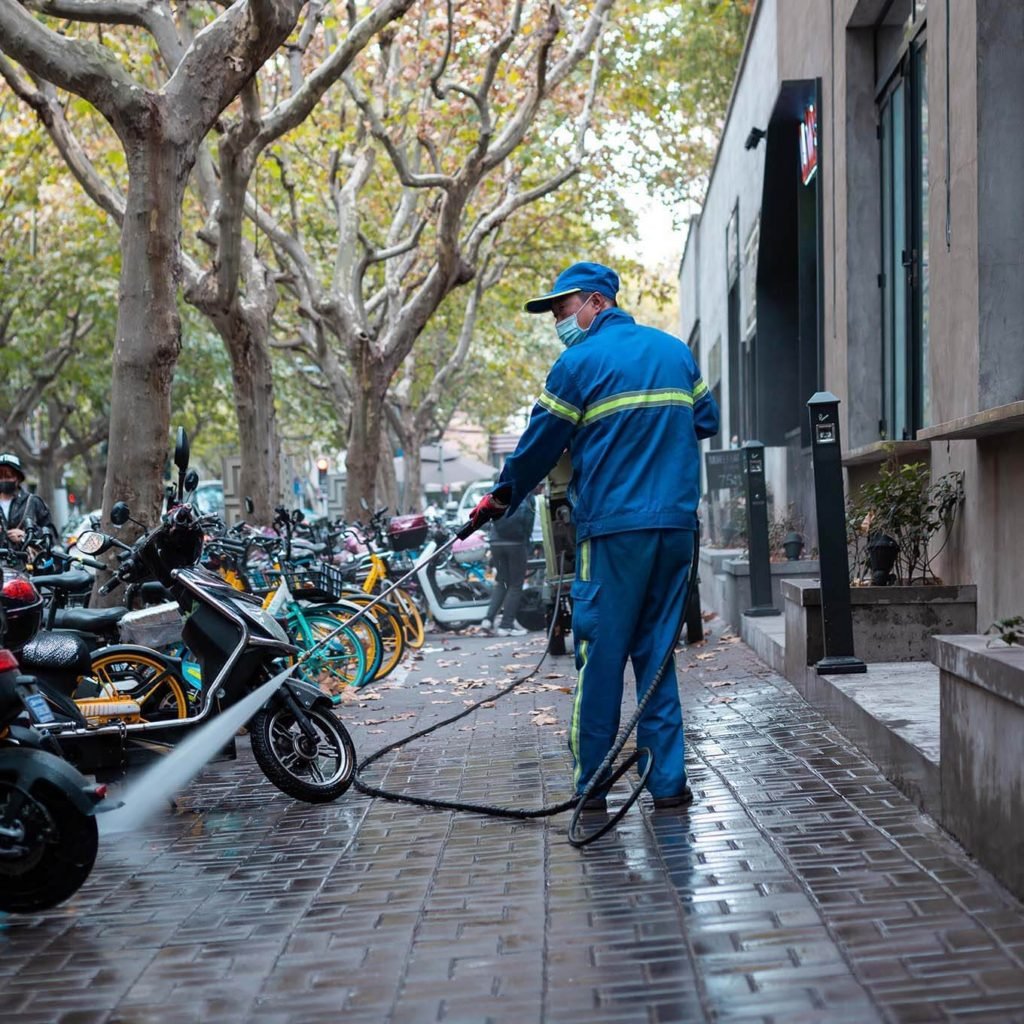
8 Easy Steps to Start a Pressure Washing Business
The prospect of launching a new business and becoming your own boss is both exciting and overwhelming. As we review how to start a pressure washing business from scratch, jot down ideas and inspiration along the way. Begin to form a business plan, and lean on your own experience and knowledge of your target market.
Once you’ve completed these 8 steps, you will be well on your way to running a successful pressure washing business.
1. Hone Your Skills
Pressure washing is about more than getting paid to spray water on driveways. If you want to set yourself apart from the competition and satisfy your clients’ needs, you need to learn how to power wash like a professional.
Operating potentially dangerous equipment while adhering to proper safety precautions is an important skill to master. Before taking on any clients, familiarize yourself with pressure washing gear.
Invest a few hours in watching YouTube videos and learning the tricks of the trade. Once you’re ready to put your knowledge to the test, consider renting pressure washing equipment and experimenting on a sidewalk near your home.
2. Establish Your Business Plan
Once you feel comfortable working with power washers, it’s time to turn your attention toward creating a business plan. Before hitting the ground running, take a moment to iron out the following details. With a little bit of advanced planning, you will be ready to run a successful power washing business.
Determine Your Service Offering
As a future business owner, you need to determine what core services you intend to offer customers.
To start, research what competitors exist in the market. Think about any experience you have, however limited it may be. Consider the nuances of your local area, and what services potential clients may benefit from.
Rather than starting broad, specialize in a service that you feel especially confident performing. Focus on mastering that skill and delivering a five-star experience to your customers before branching out.
This approach helps to maximize customer retention, and it can also help reduce upfront equipment costs.
Determine Your Target Market
After finalizing your service offering, determine who your power washing business will best serve. Consider any personal connections and how you may get your name in front of potential customers.
Are there any new businesses in the area? Do you know local business owners or landlords? If so, commercial power washing might be your best angle.
Alternatively, think about any specific neighborhoods you want to target. Do you belong to a community, church, or association where you can pitch your services? These groups may be especially receptive to your new business.
Set Your Rates
Before you start marketing, you need to establish how much you will charge customers for your services. Begin by researching the average cost of pressure washing services in your area. Look online, or ask around for quotes from other businesses.
Once you have an idea of the going rate, consider how much it costs you to provide the service. This includes the cost of any equipment or materials, as well as your own time and labor.
From there, set a price that you feel comfortable charging. This price should be enough to cover your business expenses and give you a reasonable profit margin.
Remember, you can always adjust your rates as needed based on customer feedback or changes in the market.
3. Form Your Business
After you have a handle on your business model, it’s time to take the next step and form your business. The legal structure of your business will have an impact on how you file taxes, how much personal liability you face, and what sort of paperwork you’re responsible for.
The most common business structures for small businesses are sole proprietorships, limited liability companies (LLCs), and S corporations.
Sole proprietorships are the simplest and most common type of business structure. This structure combines your personal and business assets, which means you’re held personally liable for all debts and obligations related to the business.
A limited liability company (LLC) is a business structure that offers personal liability protection by separating the company’s assets from the personal assets of the business owner. LLCs can be owned by individuals, corporations, other LLCs, and foreign entities.
S corporations offer many of the same benefits as LLCs, but with additional tax advantages. S corporations are only available to U.S. citizens and resident aliens who meet certain requirements.

Once you’ve selected the business structure that best suits your needs, you can officially form your business with an assisted service like LegalZoom or by registering directly with the Secretary of State’s office.
Lastly, apply for an employer identification number through the IRS website. This simple three-step process will get you the business equivalent of a social security number, which is necessary to open a business bank account and a business credit card.
4. Set Up Finances
If you select to form an LLC or S corporation, you will need to keep your personal and business finances separate.
To retain the personal asset protection that these business structures provide, open a business bank account to distinguish between personal assets and business assets. Also, open a business credit card to separate your personal and business expenses and begin building your company’s credit history.
Another benefit of having distinct personal and business accounts is that it greatly simplifies accounting and tax filing at the end of the year.
5. Get Business Insurance
Business insurance is vital for any business owner, but it’s especially important for those in the power washing industry. Power washing involves working with high-powered and expensive equipment, which can pose a liability risk if not used properly.
To protect your business in the event of an accident, consider investing in general liability insurance. This type of policy will cover the cost of damages if you or one of your employees is responsible for property damage or bodily injury.
You may also consider property or equipment insurance. This type of policy will protect your equipment in the event of damage or theft.
Finally, if you have employees, you will be required to carry workers’ compensation insurance in most states. Workers’ comp covers the cost of medical expenses and lost wages for employees who are injured on the job.
You can find business insurance through an insurance broker or by shopping around for policies online.
6. Create Your Brand
With the legal and financial aspects of your business squared away, start thinking about how you want to be perceived by your customers. Take the time to form a clear and recognizable brand because this is how your customers will identify and remember your business.
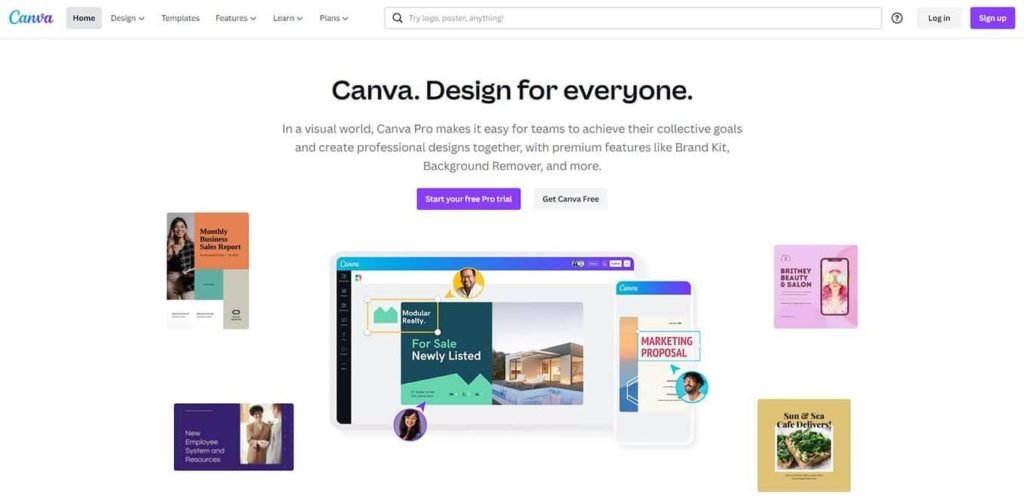
Name and Logo
Start by selecting a business name that is unique and memorable. Once you have a name, use Canva to create a logo that reflects the style of your business. Canva is an incredible tool with tens of thousands of logo templates that makes it easy to create professional designs.
Contact Info
Make it easy for new customers to contact you with a business email address and phone number.
Set up a professional email address using Google Workspace or Microsoft Office 365. Create a free business phone number with Google Voice, and have it forward calls to your cell phone.
These two quick tasks cost only a few dollars per month, but they create an air of professionalism that will help you generate more customers.
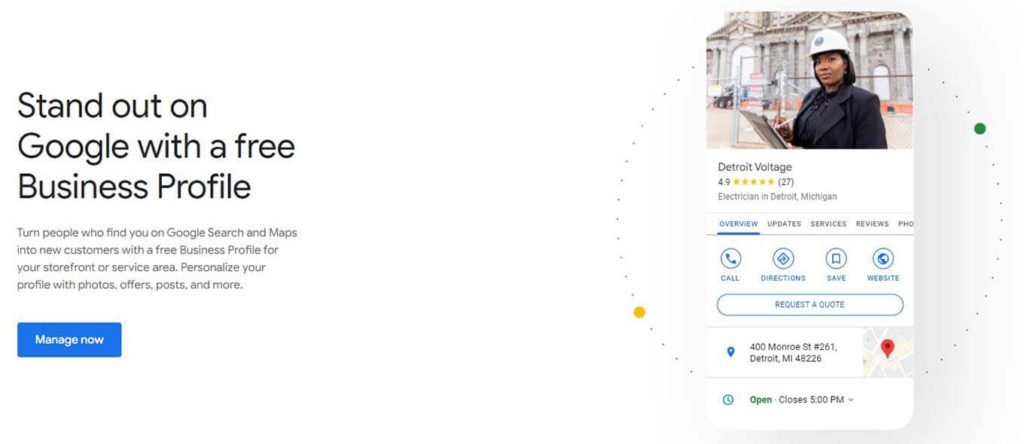
Google My Business
If you want potential customers in your area to find you online, create a free listing on Google My Business. This is how local customers will find your business when they search for pressure washing companies on Google Maps.
Your GMB listing will include your business name, address, phone number, and reviews. You can also add photos, business hours, and a description of your services. GMB is an essential tool for every local business, so take the time to create a thoughtful listing for your pressure washing company.
7. Buy The Power Washing Equipment
To complete your power washing services, you will need a pressure washer, surface cleaners, hoses, and tips.
You can find good quality used equipment on Craigslist or Facebook Marketplace. However, if you’re just starting out, you may want to buy new equipment so that you have a warranty in case something goes wrong.
Once you have your equipment, stock up on supplies like soap, detergent, and wax. And if you’re planning on starting a mobile pressure washing business, you will need to invest in a trailer or truck to haul your equipment.
You may also want to invest in additional equipment like ladders, scaffolding, or a pressure washer wand. Wands are great for reaching high windows or getting into hard-to-reach places. Ladders and scaffolding are necessary for any pressure washing business that also offers window cleaning services.
No matter what type of equipment you decide to buy, make sure that you get the best quality that you can afford. Pressure washing is a tough business, and you need durable equipment that can withstand constant use.
8. Build Your Marketing Machine
Once you have reached this point, your sole focus should be on building a marketing machine. Strive to retain existing clients by providing top-of-the-line service, and land new clients via word of mouth and creative marketing.
As a new local business, ignore social media and paid advertising to start. Instead, take a boots-on-the-ground approach and target one neighborhood per day.
Put fliers on mailboxes, write ads in chalk on the sidewalk, and knock on doors. Leave your business card at every house with a dirty driveway or patio.
These free marketing strategies should help you land your first few clients. Ask every customer if they were satisfied with your pressure washing skills. If they were not, do everything you can to make it right by them. If they were, ask for a review on your Google My Business listing.
Best Pressure Washer
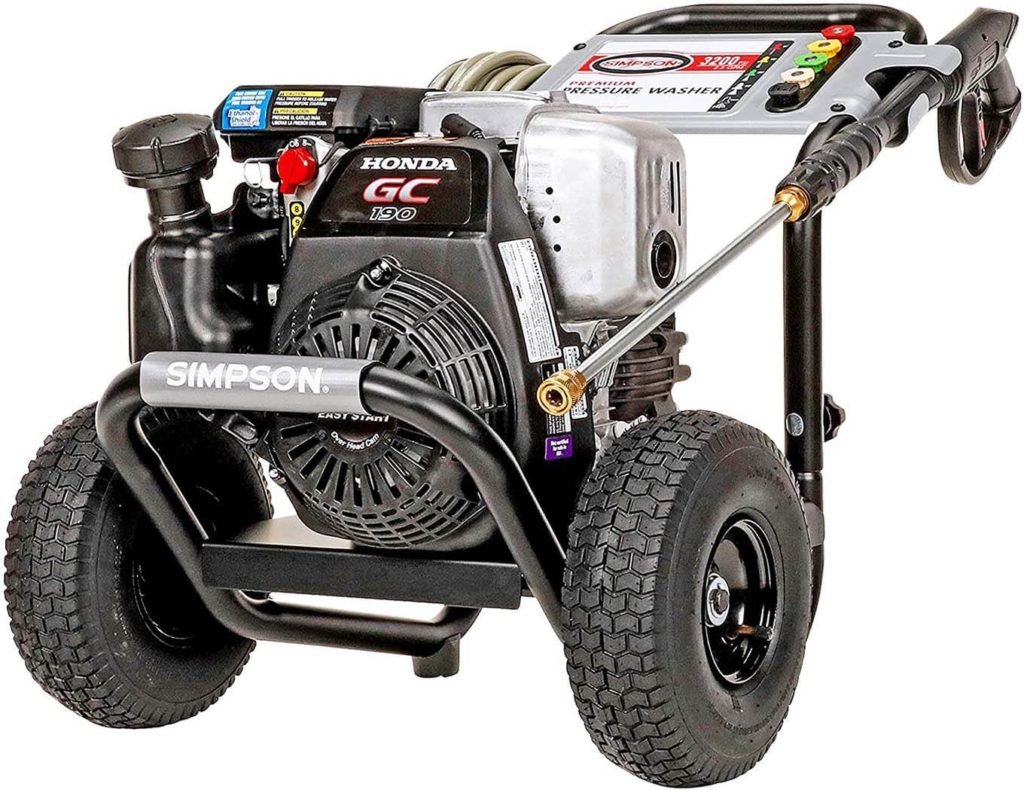
Once you understand the basics of how to start a pressure washing business, the next step is to find the best pressure washing equipment available.
Widely considered the best value for your money, the Simpson Megashot Gas Pressure Washer is one of the most highly rated pressure washers on the market. The Megashot has a 4.5-star rating on nearly 8,000 reviews and includes almost everything you need to get started as a self-employed power washer.
With a Honda engine and impressive pump specs, it is a heavy-duty residential gas pressure washer. The Megashot features a 2.5 gallons per minute flow rate, a spray gun, an extension wand, a 25-foot hose, and nozzle tips. Weighing in at only 65 pounds, and sporting 10-inch pneumatic tires, the Simpson Megashot Pressure Washer makes cleaning fun and effortless.
Starting Costs for a Pressure Washing Business
One of the upsides of starting a pressure washing company is you can pull it off for less than $1,000. We’ll break down the starting costs below:
Pressure washer
We recommend the Simpson Megashot Gas Pressure Washer, but you can also purchase a used power washer to minimize your starting costs. Visit garage sales and search online for a decent second-hand power washer. You can always upgrade after landing a few initial jobs.
Budget from $200 to $500 for a quality pressure washer.
Accessories
Other pressure washing equipment includes hoses, nozzles, extension wands, and more. These accessories are typically quite affordable, and you don’t have to buy them all at once.
Budget less than $100 for accessories.
Ladder
Depending on your market, you may need a ladder to pressure wash multiple-story buildings. If you don’t own one already, check local marketplaces for a used option.
Budget less than $100 for a ladder.
Cleaning supplies
Buy cleaning liquids like detergent or bleach to simplify the process and improve the results of your pressure wash. Most cleaning liquids are cheap and go for less than $30 per gallon.
Budget less than $50 for cleaning supplies.
Licensing and insurance
Depending on your local government regulations, you might have to pay for a business license to operate your own pressure washing business. Plus, you should also get a quote from local insurance companies for commercial liability insurance for your business.
Budget less than $250 for one-time business registration and monthly insurance.
Marketing Your Pressure Washing Business
There are many proven marketing tactics for home and commercial service businesses. Consider launching your business with the following marketing channels:
Business Website
Build a professional website to showcase your services and attract new customers. You don’t need to spend a lot of money on a complicated website. A simple WordPress site with your contact information, services, pricing, customer reviews, and a few “before” and “after” pictures should suffice.
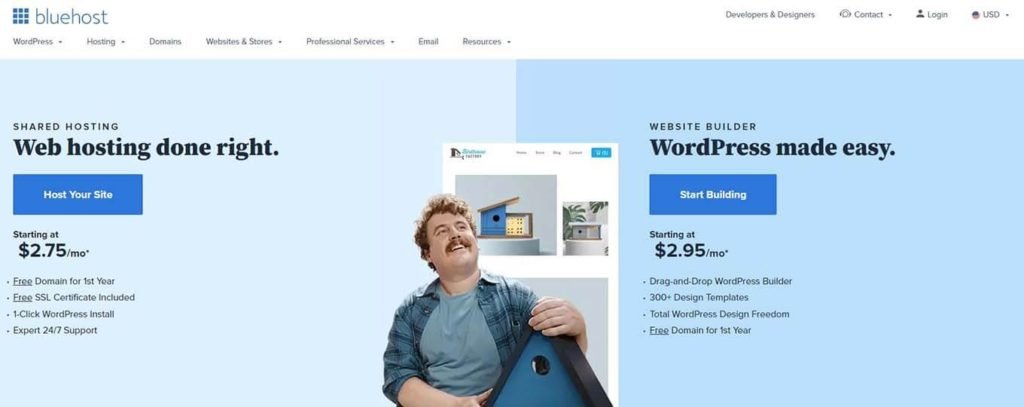
Sign up for web hosting, buy a domain name and a theme, and customize your own website with a drag and drop editor. With less than $100 and a day’s work, your business website can be up and running.
Social Media
Leverage social media to find your clients where they are already hanging out. Create social media profiles on Facebook, Twitter, Instagram, and TikTok. Post pictures and videos of customer testimonials, special offers, and your work product.
Interact with other users and comment on posts to increase exposure and boost engagement. If you have an ad budget of $50-$100, you can even test running locally targeted ads.
Offline Marketing
Even though digital marketing is all the hype today, don’t dismiss the impact of offline marketing tactics. Talk to family members, colleagues, friends, and acquaintances and tell them about your pressure washing company. Ask for references and recommendations to build your initial clientele.
How to Price Pressure Washing Services
Pressure washers can charge per square foot, per project, or by the hour. Keep these benefits and drawbacks in mind as you decide on an approach.
- Pricing your services per square foot is a fair and objective method. However, it can be rather time-consuming because you’ll have to determine the square footage of each project before providing a quote.
- Project-based pricing allows experienced pressure washers to quote much more quickly, based on an estimate of how long a job will take to complete. But from a client’s perspective, this method may feel more arbitrary.
- Hourly pricing is another fair approach to pricing your services, but it can create a perceived conflict of interest. Clients may worry that you are incentivized to complete the work more slowly.
Tips to Run a Successful Pressure Washing Business
Now that you know how to start a pressure washing business, begin to plan ahead and think about growth. Here are a few helpful tips to help you find success as an aspiring pressure washer:
Make It Easy to Book Appointments
Take all the friction out of booking appointments. When sending emails or texts to your clients, include a Calendly link where they can schedule the job.
Price Your Services Sustainably
You may be tempted to underprice your services to break into the market. Avoid competing on price, and instead, compete on quality and professionalism.
Offer prices that allow you to turn a healthy profit. Let your work quality, client service, and reputation win you jobs.
Improve Client Retention
Send customer satisfaction surveys after every job to ensure clients are happy with your performance. Personally call any client who is dissatisfied and look for ways to win them back. Offer discounts for scheduling recurring bookings, and offer incentives for referrals to new customers.

Automate Your Email
Create email templates and automated flows with ActiveCampaign. Send quotes and invoices, remind old customers to re-book, and close new leads on autopilot. Email automation software is a great way to supercharge your marketing efforts and win some of your time back.
Advantages of Starting a Pressure Washing Business
Even though making money online is all the rage, sometimes the best business ideas require us to get off the internet and pay attention to the physical world.
Here are a couple of advantages to starting a power washing company:
Low Startup Costs
With as little as $500 to $1,000, you can purchase basic pressure washing equipment. Use free marketing tactics to land your first few clients, and upgrade your operation as your power washing business grows.
You can even schedule jobs in advance for a given weekend, and then rent a power washer from Home Depot. With a little hustle, this is a great way to make $500 on your first weekend.
Easy to Start
The skills required to start a power washing company are easy to pick up. After a few hours of research and practice, you will be ready to test your hand with a client. As you perform more jobs, you will hone your skills even further.
High Demand
Every homeowner and retail business owner is a potential client. Most would love to maintain a clean driveway, parking lot, and home but don’t have the skills, time, or equipment to do the job themselves.
As with most service businesses, if you provide a fair price and high-quality work, generating demand should not be a problem.
High-Profit Margins
Pressure washing is a great business because there are few recurring expenses, and the only major expense is equipment. After day one, you only need to replenish cleaning supplies and cover labor costs if you hire. Kindly ask to use the client’s water supply, so all that is left to cover is your time.
Drawbacks to Running a Pressure Washing Business
Of course, no business is perfect. Here are a couple of potential drawbacks to consider as you evaluate how to start a pressure washing business:
Labor-Intensive
There’s no way around it. Pressure washing is grueling manual labor. You’ll have to carry equipment, climb ladders, and be on your feet all day. This can take quite a toll on your body but is also what justifies such high-profit margins.
Seasonality
In many areas, pressure washing is a seasonal business. You may find that your services are most needed during spring and summer as homeowners do home improvement projects.
If you can’t provide your services year-round, you may have to scale back your operation or seek alternative home services to provide in the winter.
One-Off Jobs
Pressure washing isn’t a service that is needed regularly. Customers may only book you once or twice per year. This means many of your jobs will be one-off, and your success will depend on landing new clients.
Final Thoughts
Now that you know how to start a pressure washing business, it’s time to get out there and start building your clientele! Remember to always provide fair pricing, high-quality work, and great customer service. With a little effort, you’ll be on your way to a successful business in no time.
Do you have any tips on how to start a pressure washing business? Let us know your ideas on Twitter.
For more tips on growing your business and building your wealth, sign up for our newsletter today!
